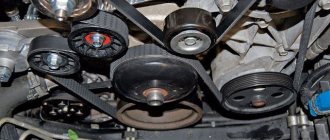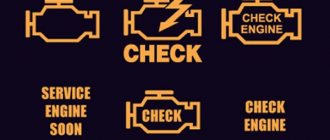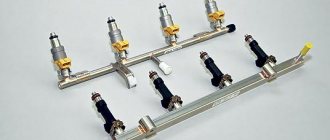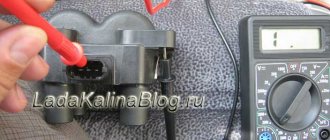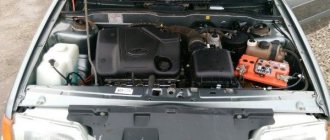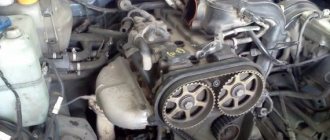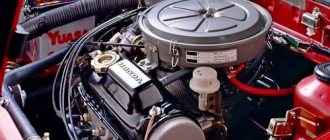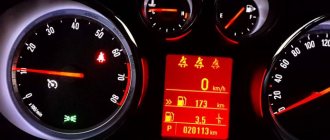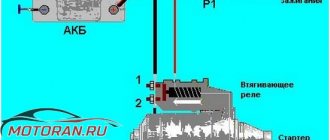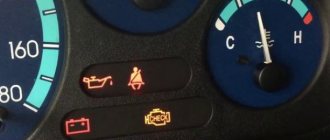Drivers are always nervous about various external noises and sounds that may arise in the vehicle. Sometimes a whistle when the car is moving does not promise anything serious. But sometimes it can indicate some serious damage to the engine. Let's look at what are the causes of whistling and how scary it is in general.
View gallery
Generator belt
The alternator belt is one of the most common causes of unpleasant noise. In this case, a whistle appears when the car is moving, that is, under load. However, after accelerating or accelerating, it may go away. Also, if a whistle is heard when the car is moving and disappears when braking, then the reason for this phenomenon is simple - belt slippage and severe wear.
View gallery
If such a whistle occurs when the car is moving in rainy weather or after driving through a puddle, then the reason may be even more trivial - the belt getting wet. In this case, you just need to wait until the part dries. After this, the whistle will go away on its own. There is no need to worry about this.
Elimination methods
A squealing belt is perhaps the only reason why a whistle may occur when starting the engine. This means that the drive element has stretched and is slipping along the pulley. So, this significantly increases the wear of the belt itself, which will inevitably lead to tragedy in the power unit, unless, of course, the situation is corrected in time. Let's consider repair and diagnostic operations to eliminate whistling in the engine.
Drive mechanism.
Timing drive
A whistling sound in the engine caused by a faulty timing belt is more than an urgent repair. If the part is not replaced in time, this will lead to a break in the drive, and at the same time to bent valves, which inevitably leads to costs.
The average, even the best belt should be changed no later than 50-70,000 km. Typically, car manufacturers indicate the maintenance interval for the timing belt unit in technical documentation and service books. In any case, the motorist must monitor the condition of the components and parts of the engine of his vehicle.
To determine the condition of the timing belt, it is necessary to remove the protective timing cover. Next, you should unscrew the tensioner and inspect the drive. The belt should not have cracks, burrs or other phenomena that will inevitably lead to rupture. Also, it is worth noting that the tension of the element is very important, since a belt that is too tight is a heavy drive, which increases wear on the rubber-metal part. With low tension, the part will slide, thereby causing a whistle. But, in modern vehicles, timing belts are used, which whistle when worn heavily.
Attachment Drive Belts
In this case the situation is still the same. Belt slippage causes a whistling sound when starting. In this case, the whistle may disappear after some time of operation. But you shouldn’t get your hopes up, because the spare part needs to be replaced as soon as possible.
Generator belt.
Another cause of whistling, in rare cases, may be a malfunction of the water pump or drive pulleys. So, the pump has a bearing installed, which wears out over time. So, a coolant leak may form from under this element, which is quite difficult to notice, especially if it is dripping. Thus, the production of an element can rotate it, after which the metal rubs against another metal, which leads to the formation of sound. As you know, after heating the elements expand, so the bearing, when it heated up during operation, expanded and stopped turning in the mounting location.
Deformation of the drive pulleys can also cause noise and whistling, since the belt slips in one place and cannot engage properly. The worst thing is if the resulting deformation causes the drive belt to rub against other parts.
You can diagnose and replace damaged elements yourself if you know the design features of the car, or contact a car service center or professional locksmiths for help. It is worth noting that timely diagnosis prevents more severe damage to the power unit and its components.
Clutch problem
In modern cars, a problem such as clutch slippage can occur. This is most often observed in cars that are very actively used in the city with a difficult driving regime: frequent stops, starts, sudden increases in speed, etc. In this case, the clutch suffers greatly. After all, it is subjected to heavy loads when stopping and starting. Fixing a clutch-related whistling problem yourself is nearly impossible without specialized knowledge and tools.
View gallery
However, you can try to determine whether the whistling sound when driving the car is actually due to this problem. To do this you need:
- Place the car on a small hill. This will create force when starting off. This way you can put more load on the motor when starting to move, which will allow you to hear the whistle better.
- Now you need to engage first gear and move off by slowly pressing the gas pedal. This way you can recognize the moment when the car starts to whistle.
- If there is a whistle when the car starts to move, that is, while the clutch is grasping, then this indicates a malfunction. To be sure, it is necessary to conduct several more similar tests. If in doubt, you can try to move off from second gear. This will increase the load on the clutch, and the whistle will be heard more clearly.
It is unrealistic to hear such a sound emanating from a node at speed. Therefore, if the whistle is clearly visible when starting, but is completely absent when driving at speed, then most likely the problem is in the clutch.
Whistle in the front left wheel.
Actually, this flaw came out this evening when approaching the house (1 km remained). This whistle appears when driving, at any speed (even coasting). And only in the left front wheel (my wife came out and listened to where the squeak/whistle was coming from). My guess is that the pads are worn out. Maybe someone will have other assumptions? Or are there people who have encountered such a problem? Thanks for the answers/advice.
I've done everything. As expected, these were pads. I put the original.
Did they whistle without braking?
And standing at idle?
I wonder if I have the same problem?
The whistle comes from the left wheel area at any speed from 5 km and above. The whistle is not strong. When you lightly press the brake, the whistling stops. When pressed harder, it returns. The volume seems to be the same at any speed. The whistle is barely audible inside the car and is clearly audible near the car. Mileage 55k, haven't changed the pads yet.
I went to the service center and diagnostics confirmed that the front pads were worn out. They replaced it, the system disappeared, everything is fine.
Maybe someone will find this information useful.
I had a wild whistle from the rear right wheel. I took the wheel off and it turned out that the pad in the caliper guides had become sour. I took everything apart, cleaned it, wiped it with a file, and lubricated it. Now it doesn't whistle. Just don’t overdo it with a file, otherwise it will rattle on bumps. Maybe the info will be useful to someone.
Hi all! Opel Astra N 2008 – mileage 64,000 km. There was also a whistle in the front left wheel and it was repeated every day, the description completely coincides with the above. I really thought the front pads were dead, after all 64 thousand. (I’ve never changed them on a car before), I bought new German ones for 1,740 rubles. I went to a friend to install it. And now the most interesting thing is that the wear of the pads is 50% with a mileage of 64,000 and is even, it turned out that the reason was not in the pads but in the guides, namely, there was no lubrication on them, I won’t tell you how the guides work, but by the way, it’s worth taking out the guides to lubricate and put them in place 200 rubles, and replacing the pads is 1740+600, and this is not from the officials. Everyone probably has the same problem, and the solution to the problem is 1 in 12. I hope for information. will be useful to someone and prevent premature expenses.
Well, the pads still whistle. Unlubricated guides prevent the pads from moving away from the brake disc.
Yes, I also have a whistle, only on the left side. You'll never know where to write, I found this topic right away. It whistles in the front left part and the brake disc gets very hot, you can fry eggs. I suspect the caliper jams when heated, although the wheel spins freely (when cold), maybe when it heats up it starts to jam or the pads, who knows what kind of horseradish, I changed the discs together with the pads in a circle , before the replacement there was nothing, but now when it’s warm, especially when it’s over plus 20, the whistle is as if you’re driving a cop UAZ, it’s even worse, the harder you brake, the worse, the whistle is such that it’s impossible to drive with the windows open,( I mean, when braking itself there is no whistle, but when you release the pedal, inserting earplugs into your ears will not help, as soon as you press the brake pedal a little or turn the steering wheel left or right, the whistle disappears))) when it cools down, everything goes away. They always say that some kind of stone has fallen into the air, everything will pass. But there’s no way in hell a stone can whistle like that twice. Tell me who thinks what. Thanks in advance.
Take off the wheel and see for yourself what's what.
1. The caliper jams if the pistons are soured. 2. The guide pins are floating in rubber boots. Usually they become sour; the brake pads work unevenly (one is free, the other brakes to the disc) Lubrication is required every time the pads are replaced. Pay attention to this.
3. Whistle from “squeaks” if the pad has critical wear (the special plate touches the brake disc)
Is repair possible?
It will only have to be repaired at a service station. Even with experience, it is difficult to understand modern gearbox and clutch systems. Therefore, it is better not to waste time, but to entrust such work to specialists. Most often it is not necessary to repair, but to change the clutch. However, for foreign cars such a solution can cost a lot of money. For example, a whistle when driving a Chevrolet Cruze car could be eliminated by replacing the entire clutch system. This is what they write on some auto forums. However, this does not mean at all that this problem is common in these machines.
View gallery
Engine whistling when starting cold: causes, solutions
Many motorists have experienced a whistling sound when starting the engine when cold. What is the reason for this effect? Those who have owned a “classic” Zhiguli immediately know where to look for the reason.
Causes
For older cars, a whistling sound on a cold engine meant that the water pump drive or the pump itself had become unusable. For newer cars, there may be several reasons for this effect.
It is worth noting that this malfunction is related to the mechanics of the engine, and there is no need to go into the electronic control unit. Therefore, let’s consider where a motorist needs to look for a fault if he wants to repair the vehicle with his own hands:
- Drive belts.
- Rollers.
- Water pump.
- Generator.
Debugg
Once the root causes have been identified, the troubleshooting process can begin directly. We stock up on time and tools. Now that everything is collected, we can begin. It is worth being prepared for the fact that parts will be required.
It is worth noting that for each specific make and model of car, the design features of the repair and location of parts will be different.
Therefore, it is recommended to first review the technological maps and study the design. Moreover, it is best to have a repair manual for the vehicle that will be restored.
Drive belts
Typically, a whistling sound in the engine, especially during a cold start, is associated with belt drives. Thus, a stretched belt slips along the pulley, which creates a characteristic squeak. Often, this effect is characteristic of the timing belt on newer cars. There are two ways to troubleshoot the problem.
The first way is to tighten the belt (only for cars with a belt and a tension pulley). To do this, you will have to dismantle the protective casing that covers the timing belt, and then tighten the drive using a tension roller. Sometimes it happens that the belt is in a very worn condition and requires replacement.
The second way is to replace the belt. Replacing the timing belt is a rather complex and time-consuming task. Therefore, it is recommended to carry out this operation at a professional car service center. Many motorists, unknowingly, when replacing the drive belt, knocked out the valve timing, which subsequently brought with it serious consequences for the power unit, such as major repairs.
For different car manufacturers, the timing of replacing the timing belt will be different, but the average indicator is that the element must be replaced after 40-50 thousand kilometers.
The process of replacing the timing belt is quite simple, but at the same time difficult to complete without knowledge of the design of the vehicle, as well as repair methods. So, let's consider the main provisions for replacing the timing belt:
- To begin with, VTM labels are set. This is necessary in order not to disrupt the valve timing when replacing the belt.
- The camshaft or shafts are fixed on pulleys to prevent rotation. There is a special tool for carrying out this operation, but as practice shows, motorists carry out fixation using improvised methods.
- Next, loosen the belt by unscrewing the tension roller.
- If necessary, on some car models, the crankshaft pulley is removed.
- Remove the belt from the seats.
- Typically, assembly of the unit is carried out in the reverse order. For many American cars, there is a specific sequence for installing the timing belt. Therefore, it is recommended to study the manuals before replacing.
Rollers
Together with the timing belt, the whistling noise may be caused by a worn tension roller. This is because the belt slides over the part, creating a whistling sound. The car rollers are replaced along with the timing belt.
On some cars, the rollers can be replaced without removing the drive belt. It is worth remembering that when changing an element, it is necessary to adjust the tension of the drive belt, because if this is not done, then very soon the whistle will appear again, and the belt will be subject to increased wear.
water pump
Many Lada owners are familiar with the whistling sound that appears after starting the engine when cold and disappears after warming up. This effect was caused by faulty pump parts. In both older and newer car models, the whistling effect can be caused by the water pump.
As with the timing belt, a squealing noise can be caused by a worn water pump belt. On older domestically produced cars, the pump is driven from the crankshaft pulley, while the gas distribution chain operates on a circuit installed directly in the block. For newer cars, the pump is part of the timing belt drive.
Let's consider this variant of the occurrence of a malfunction only for the old generation of vehicles. To eliminate the problem, you will have to determine where exactly it comes from. To begin with, you can change and tighten the drive belt. Tension adjustment is usually carried out using a generator.
Before dismantling the pump and understanding the internal elements, you should pay attention to the condition of the drive pulley. During operation, this part could become deformed and cause a lot of problems. Therefore, first we examine it for deformations and position.
If the whistle does not disappear after changing the belt, then we go even deeper. In this case, it means that the whistle comes from inside the structure. What could make such a sound? Depending on the design features of the car model, a worn bearing or water pump drive shaft may whistle.
For most car models, this means replacing the water pump. But for older GAZ models, such as the Volga 24 and 3102, as well as the 53rd Lawn, in order to save money, you can directly replace the bearing and shaft itself. But not all even the most experienced car enthusiasts can perform this type of operation, so it is recommended to contact a car service center.
Generator
Another automotive element that can cause a whistling noise under the hood of a vehicle is the generator. So, as in the case of a water pump, it is worth examining the belt and drive pulley. Unlike the pump, the generator has a weak shaft that can be slightly deformed, which will disrupt the position of the pulley.
In turn, the belt will not only slip, but will quickly wear out. Therefore, before climbing directly inside, it is worth examining whether there is any external damage to the product.
In the generator itself, the whistle may be caused by worn bearings. So, they can slip on the seat or the drive shaft slides along the inside of the bearing, which causes friction between the metals, which is heard as a whistle.
To eliminate the malfunction, it is necessary to remove the generator from the vehicle. Disassembly of the part should be carried out strictly in accordance with the service manuals for diagnostics and repair. Next, when the product is disassembled, it is worth examining the condition of the shaft, bearings and seats. If faults or damage are found, such parts should be replaced. You shouldn't change anything unnecessary.
If the car owner has not repaired such products or the sequence of actions seems complicated, you should contact an auto electrician. Specialists will be able to inexpensively replace a bearing or repair generator parts. For example, replacing the shaft with a supported one that is in good working order.
Conclusion
The causes of whistling in the engine are considered. This effect is usually caused by worn parts. To eliminate the problem, you need to replace one of the elements: belt, tensioner, pump or generator parts. Not all car enthusiasts are able to do the process themselves, so it is recommended to contact a car service center.
Engine support cushions
Even modern engines are subject to strong vibrations when the vehicle moves. How does this manifest itself? The loads from vibrations are taken by the engine mounts, which are made of hard rubber. Thanks to these parts, vibrations are dampened, and the driver in the car practically does not feel them. The cushions also absorb loads associated with impacts on the vehicle's chassis. Such influences do not have a significant effect on the engine. However, cushions can deteriorate over time. One of the characteristic signs of this phenomenon is a whistle while the car is moving. It can also occur if at least one of the cushions is not properly tightened.
Other possible causes of whistling under the hood: power steering, air conditioning, water pump
Similar to the main reasons for whistling generator belts, similar noises can occur in other units that are driven by a belt drive. The air conditioning compressor, or rather the clutch drive belt, may whistle. This can be easily checked by turning the air conditioning system on and off. In rare cases, the generator belt may whistle after turning on the climate control, which occurs as a result of a significant increase in the load on the generator.
You should also not exclude:
- possible slippage of the compressor drive clutch, which becomes more difficult to spin due to an insufficient amount of refrigerant (frion) in the system. The fact is that freon is a lubricant for the compressor;
- It is additionally necessary to check the performance and quality of lubrication of the compressor bearings and pulley, which will depend on the features of a particular design. Similar recommendations can also be applied to the power steering pump and its drive, as well as to the liquid pump of the engine cooling system;
How are pillows changed?
Replacing a pillow is a complex procedure. To do this, the engine is completely removed and hung on a winch. Then the pillow is unscrewed, inspected and, if necessary, replaced with a new one. After this, the motor is put in place. At the same time, it must be set very precisely, down to millimeters. If the installation of the power unit is not carried out very accurately, then vibrations will occur in the engine when turning or driving on a bad road. This makes it clear that it is almost impossible to replace the pillow yourself. This should only be done by professionals.
Hiss
If you hear a hissing sound while the engine is running, then it seems that the most likely causes are either depressurization of the car’s vacuum systems or an antifreeze leak in the cooling system.
When you hear extraneous sounds coming from under the hood of your car, there is no need to panic. Park in any place convenient for you and try to find out on your own the source and cause of the extraneous noise. Perhaps, with this information, you will be able to quickly and independently fix the problem.
Video about what is hidden under the hood of a car:
Timing belt
View gallery
Let's go further and consider the timing belt as a possible cause of whistling and rattling. Note that the belt itself cannot whistle, but the whistle can come from the rollers and tensioners. Determining that the sound comes specifically from the timing belt is quite difficult. At a minimum, you can start the engine and just listen to the place where the belt is. If the whistle is pronounced and comes from this particular node, then you need to go to the service station. After all, you won’t be able to do anything on your own. As already written above, the problem here is not in the belt itself, but in the system, and simply replacing the timing belt will not achieve anything.
Whistle when starting the engine: a reason that many people are unaware of
the whistling/squeaking sound when starting the car engine is very annoying because:
- irritates oneself;
- bothers neighbors
And if you start accelerating, the whistle gets even louder. Experienced car owners will begin to assume that this is a drive belt for auxiliary equipment (generator, power steering, etc.). Yes, this applies to the version and in most cases it will help get rid of extraneous sounds when starting the engine.
But what to do if after a while the squeak appears again? After all, the belt is new! The belt tensioner works as it should, but the engine whistles when starting .
You can, of course, try to remove the belts individually, try to unwind the rollers, trying to hear a squeak and find the bad one, but this is not always the cause of the whistle.
We noticed that the whistle when starting the engine occurs precisely in the morning and specifically in weather with high humidity (autumn, rain) or winter. It’s just that when temperatures change, condensation forms, which acts as a lubricant and the belt slips over the rollers and pulleys, and that’s why the whistle occurs, and it is after a little warming up, when the moisture disappears, that the whistle disappears along with it.
Many drivers can use various conditioners and belt tensioners - a liquid in the form of a spray , which is sprayed onto the belt and the whistle disappears. But all this does not last long, as a rule.
It’s just that most drivers immediately blame the spare parts, that they bought counterfeit parts and that everything else is in order.
But water also wears away stone, and the belt wears away the metal on the pulleys . Many people do not want to change pulleys ( overrunning clutch in a generator or a crankshaft pulley ), believing that it is metal and how it can wear off.
But it really can! I recently looked for the cause myself, changed 3 belts, but a week later the whistle appeared again. The spray also helped for a week. Then all the rollers, by the way, they were still in good condition. I even changed the overrunning clutch on the generator. And only after I changed the crankshaft pulley, the whistle disappeared.
And the most paradoxical thing is that there is no manual or information that if the wear is so much, then it needs to be changed, just like on tires there is a minimum profile height or like on brake discs there is a minimum disc thickness.
When the pulley is worn out , the strands on the poly V-belt slide along the pulley and rub against it until they heat up from friction, i.e. It turns out that the belt seems to have become longer.
You can also save money if you find a belt a couple of millimeters shorter, but this is quite difficult, because... Most manufacturers do not make belts in increments of a couple of millimeters in length.
In conclusion, if you make replacements according to the regulations, then this trouble will not come as a surprise to you!
Other possible causes of whistling when driving a car
A whistling noise under the hood may be caused by the power steering. The problem occurs especially often in domestic cars. After all, the power steering system here is not designed in the best way. The air conditioner drive or coolant pump drive may also whistle. Axle shafts can rattle and make sounds if they move freely in CV joints. However, in this case the car should not only whistle, but also jerk when starting off.
View gallery
In general, many elements under the hood of a car that accidentally become unscrewed or hit during a sharp increase in speed, hitting a hole, or abruptly starting can make an unpleasant sound. Completely unpredictable contacts can cause a car to whistle, and sometimes even specialists at a service station fail to identify them. Quite often, the whistle comes simply from the friction of some parts that do not play an important role in the system. Sometimes foreign objects can get under the hood, which, when vibrating, produce a characteristic sound, etc. Therefore, before starting extensive diagnostics at a service station, it is advisable to look under the hood yourself and check if there are any third-party objects that could create a whistle.
Why does the generator belt whistle (reasons for whistling)
Many car enthusiasts believe that the whistling of the alternator belt appears only because it is worn out or sagging, but this is not entirely true. It is not always possible to eliminate whistling by replacing the old belt with a new one or “tightening” it. Often the causes of whistling may not be obvious.
In order to understand how to eliminate the whistling of the generator belt, you must first understand why it whistles (squeaks, creaks), and what are the reasons for the appearance of these sounds.
During operation, the alternator belt, like other vehicle drive belts, is subjected to prolonged high loads. With its help, torque from the engine crankshaft is transmitted to the generator and other attachments.
What's the result?
You cannot leave a whistling sound in the engine and hope that it will go away on its own. Most likely, if you leave everything as is, then a malfunction of any system could lead to more serious problems with the engine in the future. Eliminating the whistle at an early stage will avoid high costs for engine repairs. So be sure to listen to the engine. If you find any strange whistling, try to determine more precisely where it is coming from. And if you can’t do this, then go to a service station. Let the professionals deal with this.
However, some car owners are not bothered by various extraneous noises from engines at all. They successfully drive cars that not only emit an unpleasant whistle, but also jerk when driving, accelerate and brake poorly. What can we say about some kind of whistle, which few people will pay attention to! But the vehicle is still worth checking.
Briefly about the causes and ways to eliminate them
If the belt begins to whistle when starting the car engine when cold, this is evidence that it is slipping. Inspection required. It is worth checking both the cleanliness and absence of cracks, and the tension level. A dirty, oily strap with a cracked working surface must be replaced. Dirt getting on the strap causes rapid wear not only of it, but also of the pulleys.
A clean product with a margin of service life is still suitable - just tighten it up if the system allows it. If this is not the case, then only installing a new one will help. The whistle appeared after a recent replacement - the belt was not tightened. Tightening does not help - either the pulleys are worn out, or the rubber product is not original. In special cases, a skewed tensioner is to blame for the squeak.
